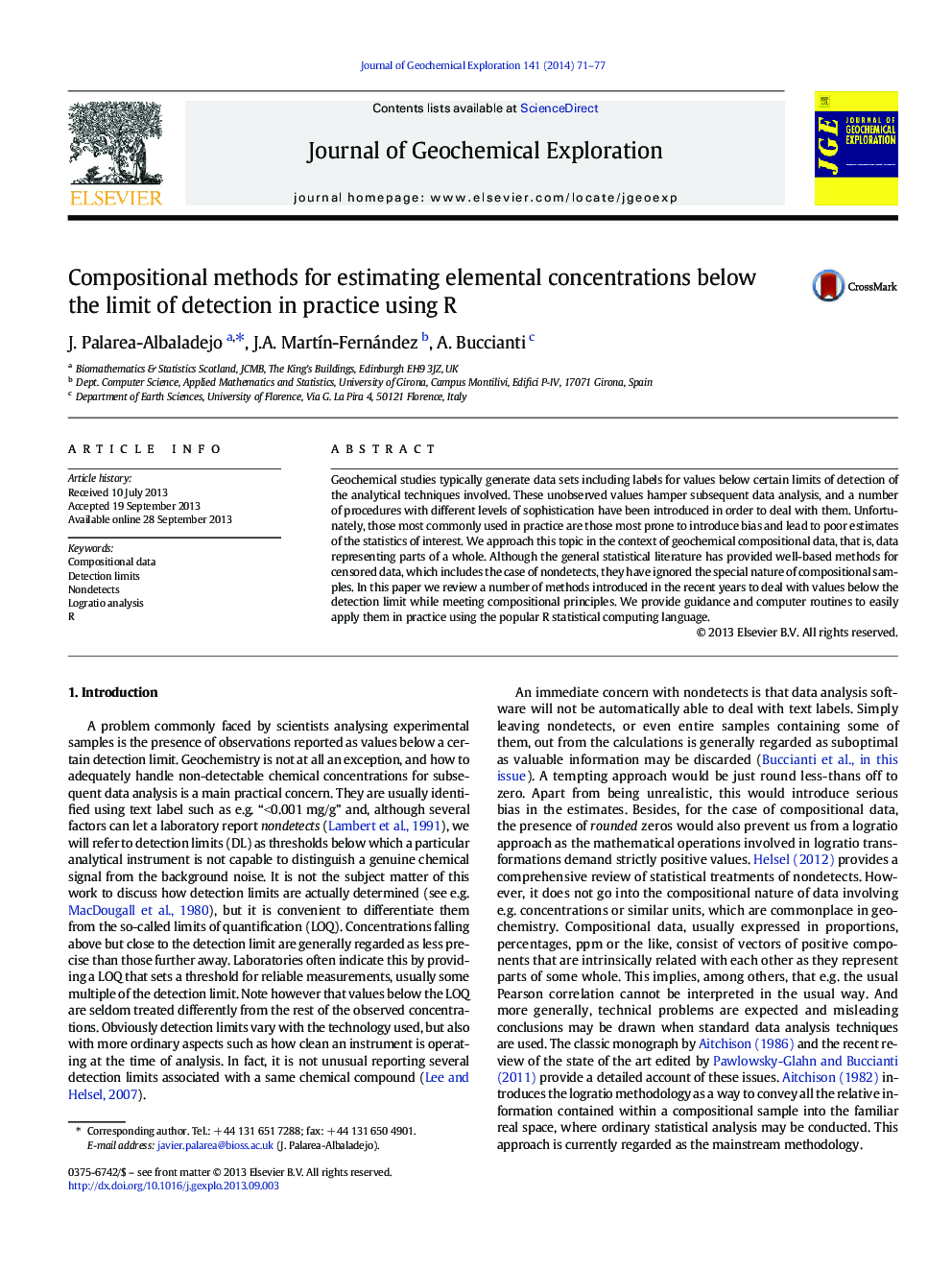| Article ID | Journal | Published Year | Pages | File Type |
|---|---|---|---|---|
| 4457341 | Journal of Geochemical Exploration | 2014 | 7 Pages |
•Values below the limit of detection in geochemical studies hamper data analysis.•Nondetects prevent logratio approach. Specialised compositional methods required.•They do not distort relative relationships and meet compositional principles.•Guidance and easy-to-use computer routines are provided by R package zCompositions.
Geochemical studies typically generate data sets including labels for values below certain limits of detection of the analytical techniques involved. These unobserved values hamper subsequent data analysis, and a number of procedures with different levels of sophistication have been introduced in order to deal with them. Unfortunately, those most commonly used in practice are those most prone to introduce bias and lead to poor estimates of the statistics of interest. We approach this topic in the context of geochemical compositional data, that is, data representing parts of a whole. Although the general statistical literature has provided well-based methods for censored data, which includes the case of nondetects, they have ignored the special nature of compositional samples. In this paper we review a number of methods introduced in the recent years to deal with values below the detection limit while meeting compositional principles. We provide guidance and computer routines to easily apply them in practice using the popular R statistical computing language.
